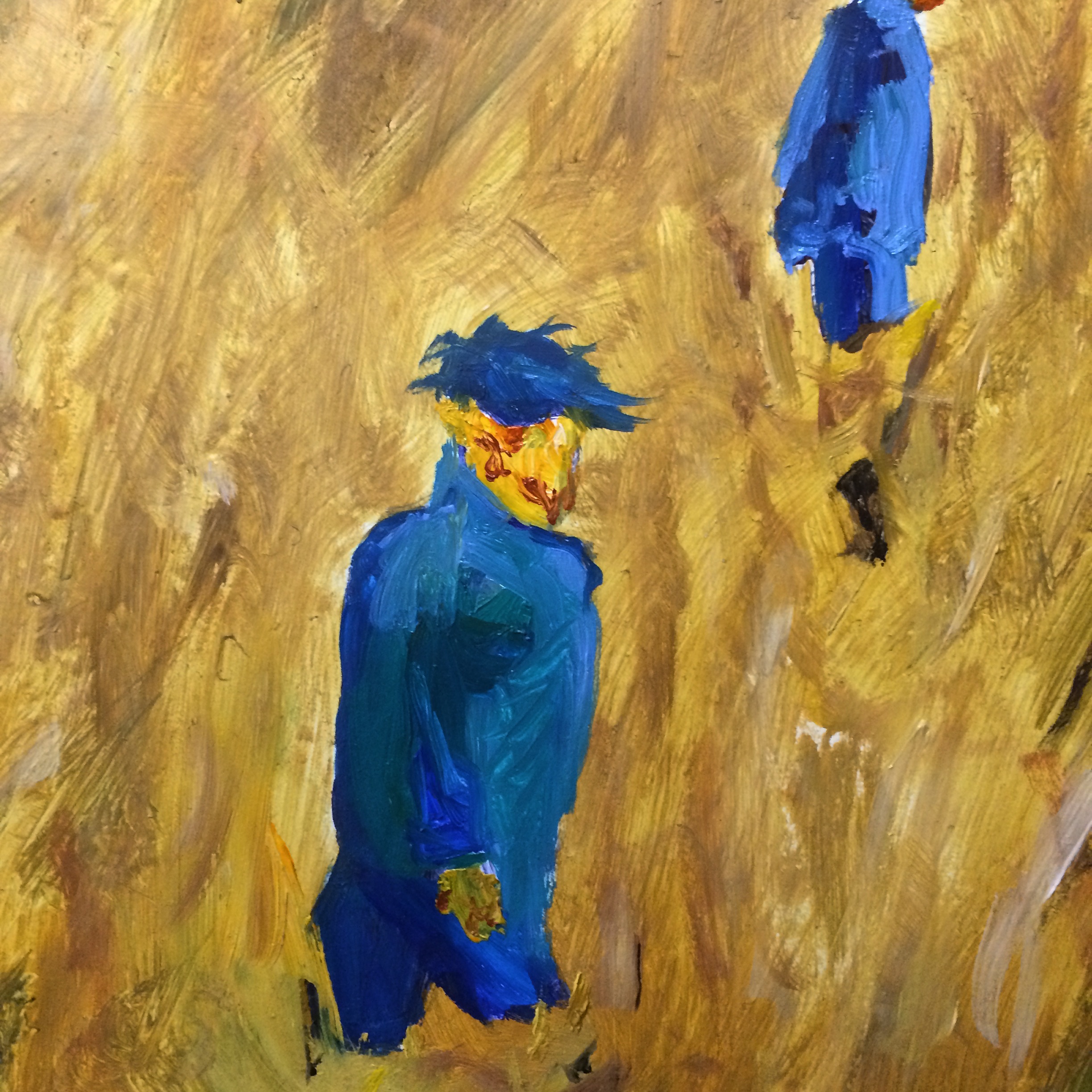Abraxas
Abraxas
by Tryn Collins, Annie Ewaskio, Laura K. Frantz, Rebecca Potts, Katie Rubright, and Stephanie J. Williams
September 26 - October 5, 2014
chashama 855
855 Wyckoff Avenue
Ridgewood, NY 11385
Opening Reception:
Friday, September 26 from 6 - 9pm
Open Hours:
Friday - Sunday, 2 - 6pm
The word “abraxas” is derived from Greek letters and imparts an ambiguous, mystical connection of mostly unknown significance. Many explanations exist, but none are definitive. “Abraxas,” linked with both Gnostic beliefs and magical practices, is possibly related to the word “abracadabra.” In the spirit of such ambiguity, these six artists present their visions of a world in perpetual flux.
About the artists:
Rebecca Potts’s machines are for travel and transformation. They are activated by presence in the present and operate on power acquired through active meditation in their creation. The world in Tryn Collins’s paintings lies just outside of her consciousness, exploring a mystical aspect of the everyday in a Connecticut suburban bubble. Gridlike abstract patterning distracts from the ghostly remnants of old trophies, ribbons, pets and swim towels. Laura K. Frantz paints macroscopic encounters with knitwear, finding meditative space in the tactility, color relationships, and patterns there. She manipulates our viewfinders to find intimate celebrations of the ephemeral in the representations of things. Katie Rubright makes paintings with a sharp view of humanity’s changing relationship with its surroundings, inhabiting an American landscape amid a crisis of authority. Instinct and reason go on parade in habitats neither intended nor hospitable to human use. Annie Ewaskio’s oil paintings traverse a mythical alter ego of the United States. Medieval painting composition, 1980’s cartoons, and Arctic industrialization are all sources for the resulting landscapes. The settings are reachable only in our imaginations, or the Internet -- supernatural spaces, many of which have been altered either by material objects within them or by unknown activity. Stephanie Williams’s work is very much about the odd stories that people often tell themselves in order to understand the world around them -- accurate or not. A rich mythology comes from one person's interpretation of a reality. Or sometimes, and more interestingly, intentionally seeing things inaccurately.

by Tryn Collins, Annie Ewaskio, Laura K. Frantz, Rebecca Potts, Katie Rubright, and Stephanie J. Williams
September 26 - October 5, 2014
chashama 855
855 Wyckoff Avenue
Ridgewood, NY 11385
Opening Reception:
Friday, September 26 from 6 - 9pm
Open Hours:
Friday - Sunday, 2 - 6pm
The word “abraxas” is derived from Greek letters and imparts an ambiguous, mystical connection of mostly unknown significance. Many explanations exist, but none are definitive. “Abraxas,” linked with both Gnostic beliefs and magical practices, is possibly related to the word “abracadabra.” In the spirit of such ambiguity, these six artists present their visions of a world in perpetual flux.
About the artists:
Rebecca Potts’s machines are for travel and transformation. They are activated by presence in the present and operate on power acquired through active meditation in their creation. The world in Tryn Collins’s paintings lies just outside of her consciousness, exploring a mystical aspect of the everyday in a Connecticut suburban bubble. Gridlike abstract patterning distracts from the ghostly remnants of old trophies, ribbons, pets and swim towels. Laura K. Frantz paints macroscopic encounters with knitwear, finding meditative space in the tactility, color relationships, and patterns there. She manipulates our viewfinders to find intimate celebrations of the ephemeral in the representations of things. Katie Rubright makes paintings with a sharp view of humanity’s changing relationship with its surroundings, inhabiting an American landscape amid a crisis of authority. Instinct and reason go on parade in habitats neither intended nor hospitable to human use. Annie Ewaskio’s oil paintings traverse a mythical alter ego of the United States. Medieval painting composition, 1980’s cartoons, and Arctic industrialization are all sources for the resulting landscapes. The settings are reachable only in our imaginations, or the Internet -- supernatural spaces, many of which have been altered either by material objects within them or by unknown activity. Stephanie Williams’s work is very much about the odd stories that people often tell themselves in order to understand the world around them -- accurate or not. A rich mythology comes from one person's interpretation of a reality. Or sometimes, and more interestingly, intentionally seeing things inaccurately.

